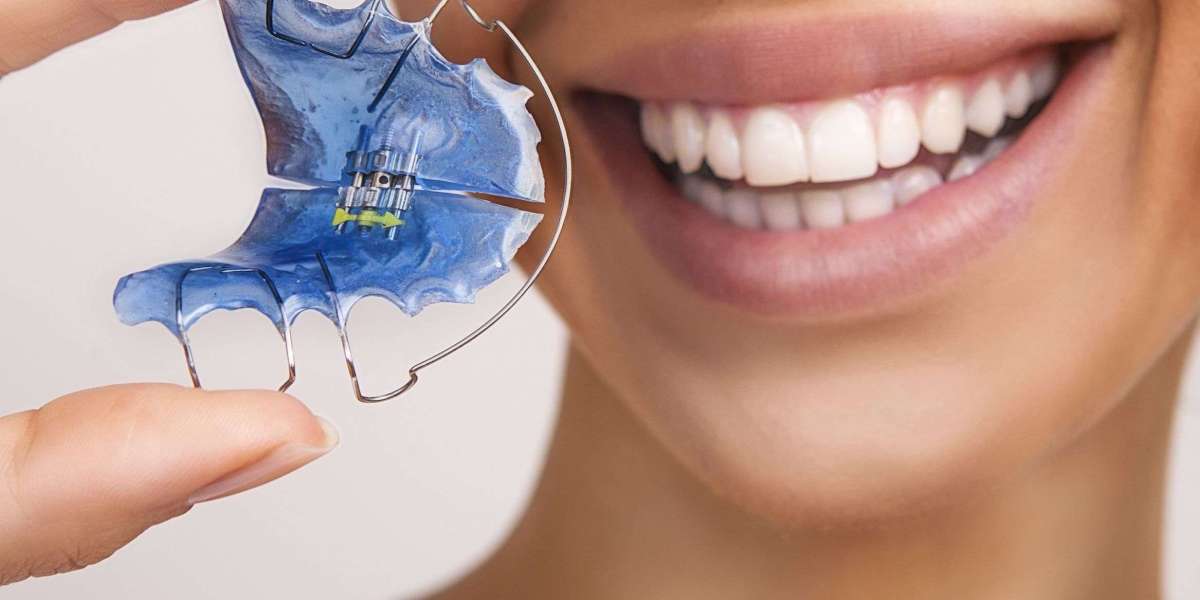How to Clean Dental Retainers:
After months (or even years) of wearing braces or clear aligners, the final stage of orthodontic treatment often involves wearing retainers. Retainers are crucial for maintaining the results of your treatment, ensuring that your teeth don’t shift back to their original positions. However, keeping your dental retainers clean is just as important as wearing them consistently.
In this article, we’ll cover why retainer hygiene matters, how to clean different types of retainers, and what to avoid to ensure your retainers stay in great shape.
You Might Also Interested In: Contractor SEO Agency
Why Is Cleaning Your Dental Retainer Important?
Dental retainers sit in your mouth for hours at a time, collecting bacteria, plaque, and food particles, just like your teeth. Failing to clean them properly can lead to several issues:
- Bacteria buildup: Dirty retainers can harbor harmful bacteria, leading to bad breath (halitosis), plaque buildup, and even infections in your mouth.
- Discoloration: Over time, retainers can become yellow or cloudy due to a lack of cleaning, which can be unsightly.
- Dental health: Wearing a dirty retainer can introduce bacteria back into your mouth, potentially leading to cavities or gum disease.
- Damage to the retainer: Improper cleaning can cause your retainer to become damaged or deformed, making it less effective in keeping your teeth in place.
Different Types of Retainers
Before diving into cleaning methods, it’s important to know what type of retainer you have. There are two main categories:
Removable retainers:
- Hawley retainers: These consist of a plastic or acrylic base that sits on the roof of your mouth, with metal wires that fit around your teeth to keep them in place.
- Clear retainers (Essix retainers): Made from transparent plastic, these are similar in appearance to clear aligners, snugly fitting over your teeth.
Fixed (permanent) retainers:
- Bonded retainers: These are thin wires that are cemented to the back of your teeth, typically on the lower front teeth. These retainers are permanent and require different cleaning techniques than removable ones.
How to Clean Removable Retainers
Cleaning your removable retainer should be part of your daily oral care routine. Here's how to keep them clean and in top shape:
1. Daily Cleaning with Lukewarm Water
The easiest and most effective way to clean your retainer daily is to rinse it with lukewarm water after every meal. This helps to remove any loose food particles and prevent plaque from building up on the retainer.
2. Use a Soft-Bristled Toothbrush
Gently brush your retainer with a soft toothbrush and non-abrasive toothpaste or mild dish soap. Avoid using regular toothpaste that contains whitening agents or abrasive ingredients, as they can scratch and damage the retainer.
- For Hawley retainers: Focus on brushing both the plastic base and the metal wires.
- For clear retainers: Brush all surfaces of the retainer gently to avoid scratching the plastic.
3. Retainer Cleaning Solutions
For a deeper clean, you can use a specialized retainer or denture cleaning solution. These are usually available in tablet form and are dissolved in water to create a cleaning solution. Soak your retainer for the recommended time (usually 10-20 minutes) to help eliminate bacteria and remove stubborn stains.
Popular retainer cleaning products include:
- Retainer Brite
- Polident (for dentures, but safe for retainers)
- Efferdent
4. Vinegar and Water Solution
For a natural cleaning solution, mix equal parts white vinegar and water. Soak your retainer in the solution for about 15-30 minutes to dissolve plaque and mineral deposits. After soaking, brush and rinse the retainer thoroughly.
5. Baking Soda Paste
Baking soda is another effective natural cleaner for retainers. Mix baking soda with a little water to form a paste and use it to gently scrub the retainer. Baking soda helps eliminate odors and has antibacterial properties.
How to Clean Fixed (Bonded) Retainers
Since fixed retainers are permanently attached to your teeth, cleaning them requires a different approach, focusing on maintaining the health of the surrounding teeth and gums.
1. Brush Carefully Around the Retainer
Brush your teeth as usual, paying extra attention to the areas around the wire. A soft-bristled toothbrush or an electric toothbrush can help reach these areas without irritating your gums.
2. Use Floss Threaders
Flossing with a bonded retainer can be tricky, but it’s important to prevent plaque buildup. Use a floss threader or a water flosser to clean between your teeth and around the wire. Floss threaders help guide dental floss beneath the wire for effective cleaning.
3. Consider a Water Flosser
Water flossers (like Waterpik) can be particularly helpful for cleaning around fixed retainers. The targeted water stream helps remove food particles and plaque from hard-to-reach areas around the retainer.
What to Avoid When Cleaning Your Retainer
To keep your retainer in good condition and avoid damage, steer clear of the following:
- Hot water: Never use hot or boiling water to clean your retainer, as it can warp or deform the plastic, making it less effective.
- Harsh chemicals: Avoid using bleach, alcohol-based mouthwashes, or other harsh chemicals that can degrade the material of your retainer.
- Toothpaste with abrasives: Whitening toothpaste or any toothpaste with gritty particles can scratch the surface of your retainer, leading to cloudiness and making it more prone to bacteria buildup.
- Skipping cleanings: It’s important to clean your retainer daily to prevent buildup of bacteria, plaque, and odors.
How Often Should You Clean Your Retainer?
- Daily cleaning: Rinse your retainer and brush it with water and a toothbrush after each meal.
- Deep cleaning: Soak your retainer in a cleaning solution or use a natural cleaning method (vinegar or baking soda) at least once a week for a more thorough clean.
Storing Your Retainer Safely
When you're not wearing your removable retainer, store it in a retainer case to protect it from damage and exposure to germs. Make sure the case is ventilated and clean it regularly to prevent bacteria from accumulating.
Never wrap your retainer in a napkin or leave it exposed on countertops, as this increases the risk of it being lost, damaged, or contaminated.
Final Thoughts
Cleaning your dental retainer is essential for both your oral health and the longevity of the retainer itself. By following the recommended cleaning routines for your specific type of retainer and avoiding common mistakes, you can keep your retainer free of bacteria, plaque, and odors, ensuring that it continues to do its job effectively.
Remember, a clean retainer equals a healthy smile, so make retainer care a regular part of your daily oral hygiene routine!








